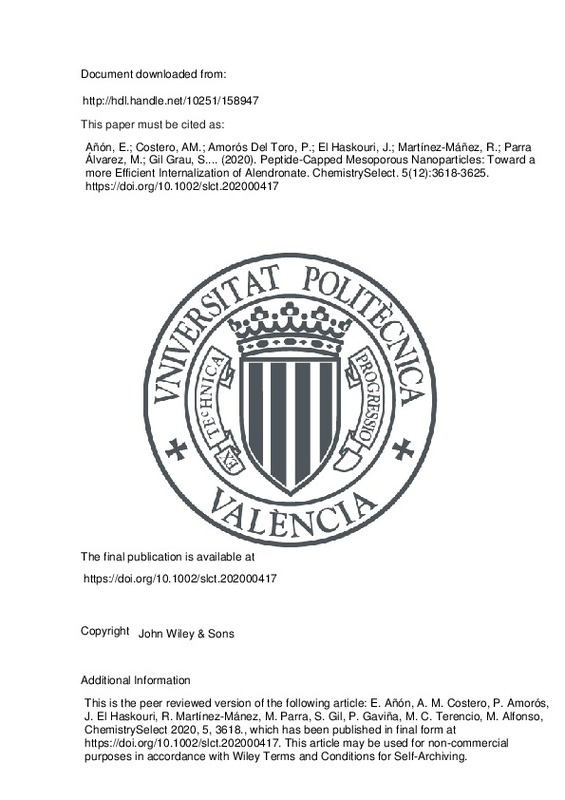Qaseem, A., Forciea, M. A., McLean, R. M., & Denberg, T. D. (2017). Treatment of Low Bone Density or Osteoporosis to Prevent Fractures in Men and Women: A Clinical Practice Guideline Update From the American College of Physicians. Annals of Internal Medicine, 166(11), 818. doi:10.7326/m15-1361
Cramer, J. A., Gold, D. T., Silverman, S. L., & Lewiecki, E. M. (2007). A systematic review of persistence and compliance with bisphosphonates for osteoporosis. Osteoporosis International, 18(8), 1023-1031. doi:10.1007/s00198-006-0322-8
Watts, N. B., & Diab, D. L. (2010). Long-Term Use of Bisphosphonates in Osteoporosis. The Journal of Clinical Endocrinology & Metabolism, 95(4), 1555-1565. doi:10.1210/jc.2009-1947
[+]
Qaseem, A., Forciea, M. A., McLean, R. M., & Denberg, T. D. (2017). Treatment of Low Bone Density or Osteoporosis to Prevent Fractures in Men and Women: A Clinical Practice Guideline Update From the American College of Physicians. Annals of Internal Medicine, 166(11), 818. doi:10.7326/m15-1361
Cramer, J. A., Gold, D. T., Silverman, S. L., & Lewiecki, E. M. (2007). A systematic review of persistence and compliance with bisphosphonates for osteoporosis. Osteoporosis International, 18(8), 1023-1031. doi:10.1007/s00198-006-0322-8
Watts, N. B., & Diab, D. L. (2010). Long-Term Use of Bisphosphonates in Osteoporosis. The Journal of Clinical Endocrinology & Metabolism, 95(4), 1555-1565. doi:10.1210/jc.2009-1947
Kavanagh, K. L., Guo, K., Dunford, J. E., Wu, X., Knapp, S., Ebetino, F. H., … Oppermann, U. (2006). The molecular mechanism of nitrogen-containing bisphosphonates as antiosteoporosis drugs. Proceedings of the National Academy of Sciences, 103(20), 7829-7834. doi:10.1073/pnas.0601643103
Ochiuz, L., Grigoras, C., Popa, M., Stoleriu, I., Munteanu, C., Timofte, D., … Grigoras, A. (2016). Alendronate-Loaded Modified Drug Delivery Lipid Particles Intended for Improved Oral and Topical Administration. Molecules, 21(7), 858. doi:10.3390/molecules21070858
Junyaprasert, V. B., & Morakul, B. (2015). Nanocrystals for enhancement of oral bioavailability of poorly water-soluble drugs. Asian Journal of Pharmaceutical Sciences, 10(1), 13-23. doi:10.1016/j.ajps.2014.08.005
Elgadir, M. A., Uddin, M. S., Ferdosh, S., Adam, A., Chowdhury, A. J. K., & Sarker, M. Z. I. (2015). Impact of chitosan composites and chitosan nanoparticle composites on various drug delivery systems: A review. Journal of Food and Drug Analysis, 23(4), 619-629. doi:10.1016/j.jfda.2014.10.008
Farjadian, F., Ghasemi, A., Gohari, O., Roointan, A., Karimi, M., & Hamblin, M. R. (2019). Nanopharmaceuticals and nanomedicines currently on the market: challenges and opportunities. Nanomedicine, 14(1), 93-126. doi:10.2217/nnm-2018-0120
Farjadian, F., Roointan, A., Mohammadi-Samani, S., & Hosseini, M. (2019). Mesoporous silica nanoparticles: Synthesis, pharmaceutical applications, biodistribution, and biosafety assessment. Chemical Engineering Journal, 359, 684-705. doi:10.1016/j.cej.2018.11.156
Zhang, Y., Wang, J., Bai, X., Jiang, T., Zhang, Q., & Wang, S. (2012). Mesoporous Silica Nanoparticles for Increasing the Oral Bioavailability and Permeation of Poorly Water Soluble Drugs. Molecular Pharmaceutics, 9(3), 505-513. doi:10.1021/mp200287c
Candel, I., Aznar, E., Mondragón, L., Torre, C. de la, Martínez-Máñez, R., Sancenón, F., … Parra, M. (2012). Amidase-responsive controlled release of antitumoral drug into intracellular media using gluconamide-capped mesoporous silica nanoparticles. Nanoscale, 4(22), 7237. doi:10.1039/c2nr32062b
De la Torre, C., Domínguez-Berrocal, L., Murguía, J. R., Marcos, M. D., Martínez-Máñez, R., Bravo, J., & Sancenón, F. (2018). ϵ
-Polylysine-Capped Mesoporous Silica Nanoparticles as Carrier of the C
9h
Peptide to Induce Apoptosis in Cancer Cells. Chemistry - A European Journal, 24(8), 1890-1897. doi:10.1002/chem.201704161
Juárez, L. A., Añón, E., Giménez, C., Sancenón, F., Martínez-Máñez, R., Costero, A. M., … Bernardos, A. (2016). Self-Immolative Linkers as Caps for the Design of Gated Silica Mesoporous Supports. Chemistry - A European Journal, 22(40), 14126-14130. doi:10.1002/chem.201602126
Patel, K., Angelos, S., Dichtel, W. R., Coskun, A., Yang, Y.-W., Zink, J. I., & Stoddart, J. F. (2008). Enzyme-Responsive Snap-Top Covered Silica Nanocontainers. Journal of the American Chemical Society, 130(8), 2382-2383. doi:10.1021/ja0772086
Sun, Y.-L., Zhou, Y., Li, Q.-L., & Yang, Y.-W. (2013). Enzyme-responsive supramolecular nanovalves crafted by mesoporous silica nanoparticles and choline-sulfonatocalix[4]arene [2]pseudorotaxanes for controlled cargo release. Chemical Communications, 49(79), 9033. doi:10.1039/c3cc45216f
Alberti, S., Soler-Illia, G. J. A. A., & Azzaroni, O. (2015). Gated supramolecular chemistry in hybrid mesoporous silica nanoarchitectures: controlled delivery and molecular transport in response to chemical, physical and biological stimuli. Chemical Communications, 51(28), 6050-6075. doi:10.1039/c4cc10414e
Slowing, I., Trewyn, B. G., & Lin, V. S.-Y. (2006). Effect of Surface Functionalization of MCM-41-Type Mesoporous Silica Nanoparticles on the Endocytosis by Human Cancer Cells. Journal of the American Chemical Society, 128(46), 14792-14793. doi:10.1021/ja0645943
Oroval, M., Díez, P., Aznar, E., Coll, C., Marcos, M. D., Sancenón, F., … Martínez-Máñez, R. (2016). Self-Regulated Glucose-Sensitive Neoglycoenzyme-Capped Mesoporous Silica Nanoparticles for Insulin Delivery. Chemistry - A European Journal, 23(6), 1353-1360. doi:10.1002/chem.201604104
Teruel, A., Coll, C., Costero, A., Ferri, D., Parra, M., Gaviña, P., … Sancenón, F. (2018). Functional Magnetic Mesoporous Silica Microparticles Capped with an Azo-Derivative: A Promising Colon Drug Delivery Device. Molecules, 23(2), 375. doi:10.3390/molecules23020375
Drake, F. H., Dodds, R. A., James, I. E., Connor, J. R., Debouck, C., Richardson, S., … Gowen, M. (1996). Cathepsin K, but Not Cathepsins B, L, or S, Is Abundantly Expressed in Human Osteoclasts. Journal of Biological Chemistry, 271(21), 12511-12516. doi:10.1074/jbc.271.21.12511
ALVES, M. F. M., PUZER, L., COTRIN, S. S., JULIANO, M. A., JULIANO, L., BRÖMME, D., & CARMONA, A. K. (2003). S3 to S3’ subsite specificity of recombinant human cathepsin K and development of selective internally quenched fluorescent substrates. Biochemical Journal, 373(3), 981-986. doi:10.1042/bj20030438
Walash, M. I., Metwally, M. E.-S., Eid, M., & El-Shaheny, R. N. (2012). Validated spectrophotometric methods for determination of Alendronate sodium in tablets through nucleophilic aromatic substitution reactions. Chemistry Central Journal, 6(1). doi:10.1186/1752-153x-6-25
CUETARA, B. L. V., CROTTI, T. N., O’DONOGHUE, A. J., & MCHUGH, K. P. (2006). CLONING AND CHARACTERIZATION OF OSTEOCLAST PRECURSORS FROM THE RAW264.7 CELL LINE. In Vitro Cellular & Developmental Biology - Animal, 42(7), 182. doi:10.1290/0510075.1
[-]







![[Cerrado]](/themes/UPV/images/candado.png)


